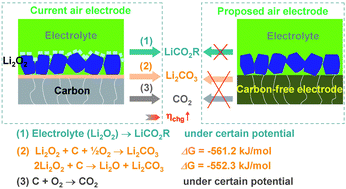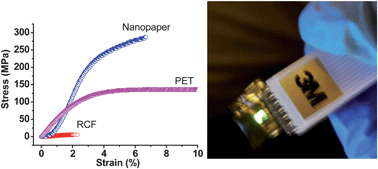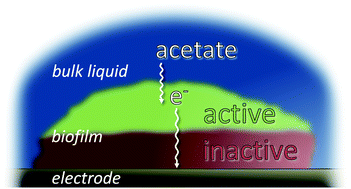This month sees the following articles in Energy & Environmental Science that are in the top ten most accessed in March:
Uniform V2O5 nanosheet-assembled hollow microflowers with excellent lithium storage properties
An Qiang Pan, Hao Bin Wu, Lei Zhang and Xiong Wen (David) Lou
Energy Environ. Sci., 2013,6, 1476-1479
DOI: 10.1039/C3EE40260F
Graphene quantum dots: an emerging material for energy-related applications and beyond
Zhipan Zhang, Jing Zhang, Nan Chena and Liangti Qu
Energy Environ. Sci., 2012,5, 8869-8890
DOI: 10.1039/C2EE22982J
Graphene and its derivatives for the development of solar cells, photoelectrochemical, and photocatalytic applications
Da Chen, Hao Zhang, Yang Liua and Jinghong Li
Energy Environ. Sci., 2013,6, 1362-1387
DOI: 10.1039/C3EE23586F
The role of biofuels in the future energy supply
Luis Caspeta, Nicolaas A. A. Buijs and Jens Nielsen
Energy Environ. Sci., 2013,6, 1077-1082
DOI: 10.1039/C3EE24403B
Lithium–oxygen batteries: bridging mechanistic understanding and battery performance
Yi-Chun Lu, Betar M. Gallant, David G. Kwabi, Jonathon R. Harding, Robert R. Mitchell, M. Stanley Whittingham and Yang Shao-Horn
Energy Environ. Sci., 2013,6, 750-768
DOI: 10.1039/C3EE23966G
A membrane-free lithium/polysulfide semi-liquid battery for large-scale energy storage
Yuan Yang, Guangyuan Zheng and Yi Cui
Energy Environ. Sci., 2013,6, 1552-1558
DOI: 10.1039/C3EE00072A
High performance hybrid solar cells sensitized by organolead halide perovskites
Bing Cai, Yedi Xing, Zhou Yang, Wen-Hua Zhang and Jieshan Qiu
Energy Environ. Sci., 2013,6, 1480-1485
DOI: 10.1039/C3EE40343B
Highly efficient dye-sensitized solar cells: progress and future challenges
Shufang Zhang, Xudong Yang, Youhei Numata and Liyuan Han
Energy Environ. Sci., 2013,6, 1443-1464
DOI: 10.1039/C3EE24453A
Challenges in the development of advanced Li-ion batteries: a review
Vinodkumar Etacheri, Rotem Marom, Ran Elazari, Gregory Salitra and Doron Aurbach
Energy Environ. Sci., 2011,4, 3243-3262
DOI: 10.1039/C1EE01598B
Photoelectrochemical cells for solar hydrogen production: current state of promising photoelectrodes, methods to improve their properties, and outlook
Zhaosheng Li, Wenjun Luo, Minglong Zhang, Jianyong Fenga and Zhigang Zou
Energy Environ. Sci., 2013,6, 347-370
DOI: 10.1039/C2EE22618A
Why not take a look at the articles today and blog your thoughts and comments below
Fancy submitting an article to EES? Then why not submit to us today!















